In this comprehensive article, you will explore a comparison of various wireless home security systems. From popular names such as Ring and Nest, to emerging brands like Eufy Security and Wyze, we will discuss the features, functionality, and affordability of these systems. As we delve into the world of wireless home security, we will also consider the offerings of manufacturers like SimpliSafe, Blink, ADT, and many more. So, whether you’re a tech enthusiast searching for the latest advancements or a homeowner looking for the perfect security system, this article will provide you with invaluable insights to make an informed decision.
Installation and Setup
Installing a home security system can be done in two ways: through DIY installation or professional installation. DIY installation involves setting up the system yourself, while professional installation is done by a trained technician.
In terms of ease of setup, DIY installation may require some technical knowledge and effort on your part. However, many wireless home security systems come with easy-to-follow instructions and user-friendly interfaces, making the installation process manageable even for beginners.
Both DIY and professional installation options often provide installation equipment as part of the package. This can include cameras, sensors, control panels, and other necessary components. Some brands may offer more extensive equipment packages, providing a comprehensive security solution right out of the box.
Features
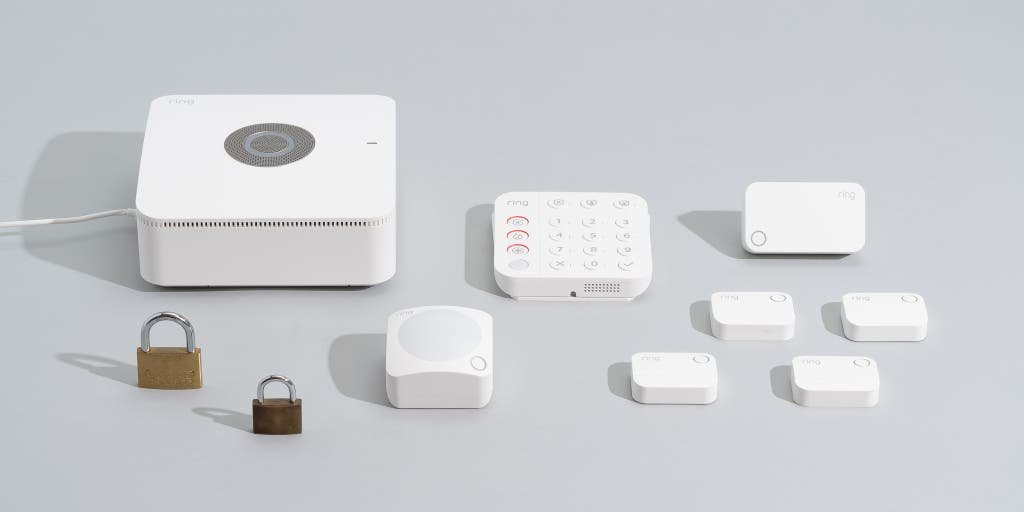
Motion Detection
Motion detection is a crucial feature that allows the security system to detect movement within its coverage area. When motion is detected, the system can trigger notifications, alarms, or video recording, depending on the settings. This feature is essential for monitoring activity around your home and detecting potential intruders.
Video Surveillance
Video surveillance is a key component of most wireless home security systems. It allows you to monitor live video feeds from your cameras remotely, through a mobile app or web portal. Video surveillance provides an extra layer of security, as you can visually verify potential threats or suspicious activity.
Two-Way Audio
The two-way audio feature enables you to communicate with anyone near the camera, such as visitors, delivery drivers, or even intruders. This feature is particularly useful for remote monitoring and can help you provide instructions, deter potential criminals, or simply have a conversation with someone at your doorstep.
Smart Home Integration
Smart home integration allows your wireless home security system to seamlessly connect and communicate with other compatible smart devices in your home. This integration enables you to control your security system using voice commands or through a centralized smart home platform. Integration with devices like smart locks, lighting, and thermostats can enhance the overall security and convenience of your home.
Mobile App Control
Most wireless home security systems offer mobile apps that allow you to control and monitor your system remotely from your smartphone or tablet. With these apps, you can receive real-time alerts, access live video feeds, arm or disarm the system, and customize settings on the go. Mobile app control adds flexibility and convenience to your home security management.
Cloud Storage
Cloud storage is a popular option for storing recorded video footage from your wireless security cameras. With cloud storage, the footage is securely stored in remote servers, accessible to you through online platforms or mobile apps. This eliminates the need for physical storage devices and ensures your footage is protected even if the camera is tampered with or stolen.
Voice Control
Voice control is an increasingly common feature in wireless home security systems. With voice assistants such as Amazon Alexa or Google Assistant, you can control your security system using voice commands. This hands-free control adds convenience and accessibility to your security management, allowing you to arm/disarm the system, check camera feeds, or receive status updates with a simple voice command.
Siren
A built-in siren is a feature that can be found in many wireless home security systems. When triggered by an alarm event, the siren emits a loud sound to alert you and potentially deter intruders. The siren can be especially useful if you’re away from home, as it can draw attention to the premises and prompt neighbors or passersby to take action.
Panic Button
Some wireless home security systems offer a panic button feature, either as a physical button or within the mobile app. This allows you to quickly trigger an emergency alarm, instantly alerting the system monitoring service or notifying designated contacts. The panic button can be a valuable safety feature in situations where immediate help is needed.
Entry Sensors
Entry sensors are small devices installed on doors and windows, frequently found in wireless home security systems. These sensors detect when a door or window is opened or closed. When triggered, they can send notifications or activate alarms to alert you of unauthorized entry. Entry sensors are an essential component of a comprehensive home security system, providing an additional layer of protection.
Camera Quality
Resolution
The resolution of a security camera determines the quality and clarity of the captured video. Higher resolution cameras provide more detailed footage, making it easier to identify faces, read license plates, or capture other important details. Common resolutions for security cameras include 720p HD, 1080p Full HD, and even 4K Ultra HD.
Field of View
The field of view refers to the area that a camera can capture within its range. Cameras with a wider field of view can cover more area without requiring additional cameras. The field of view can be specified in degrees or as a measurement of the horizontal and vertical range. A wider field of view is particularly useful for monitoring large spaces or multiple entry points.
Night Vision
Night vision is a crucial feature for wireless security cameras, as it allows them to capture clear footage even in low light or complete darkness. Infrared (IR) LEDs are commonly used to provide night vision capabilities. The range and quality of night vision vary between cameras, so it’s essential to consider these aspects when choosing a wireless home security system.
Zoom Capabilities
Some wireless security cameras offer zoom capabilities, allowing you to magnify and focus on specific areas or objects. Optical zoom provides a true zoom effect by adjusting the camera lens, while digital zoom enlarges the image digitally. Zoom capabilities can be valuable for close-up monitoring or capturing important details from a distance.
Camera Types
Wireless home security systems offer various types of cameras to suit different needs and locations. Bullet cameras are cylindrical and designed for long-range coverage, while dome cameras are compact and blend well with the surroundings. PTZ (Pan-Tilt-Zoom) cameras can be remotely controlled to move and zoom, providing flexible monitoring options. Each camera type has its advantages and is suitable for different situations.
Monitoring Options
Professional Monitoring
Professional monitoring involves a third-party service that monitors your security system 24/7. When an alarm event occurs, the monitoring center is notified and takes the appropriate action, such as contacting emergency services or dispatching security personnel. Professional monitoring provides round-the-clock surveillance and immediate response to potential threats, adding an extra layer of protection to your home.
Self-Monitoring
Self-monitoring allows you to monitor your security system yourself, without involving a professional monitoring service. With self-monitoring, alerts and notifications are sent directly to your mobile device or email, allowing you to take action accordingly. This option gives you more control and reduces the cost associated with professional monitoring services.
24/7 Monitoring
24/7 monitoring ensures continuous surveillance of your home security system, regardless of the time of day. This type of monitoring is essential for real-time threat detection and immediate response. Whether it’s an intrusion, fire, or other emergencies, 24/7 monitoring provides peace of mind knowing that your security system is always actively protecting your home.
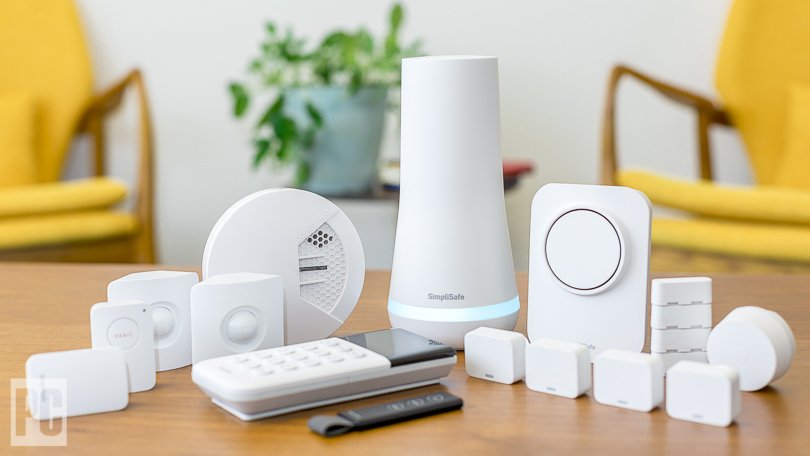
Selective Monitoring
Selective monitoring allows you to choose specific areas or devices within your home to monitor. This can be useful if you only want to focus on vulnerable entry points or high-risk areas. By selectively monitoring certain zones, you can customize your security system to suit your specific needs and allocate resources where they are most needed.
Alert Notifications
Alert notifications are a crucial part of any wireless home security system. When an alarm event occurs, such as a detected motion or breach, the system can send notifications to your mobile device or email. These notifications provide real-time updates about potential threats, allowing you to take quick action or investigate the situation remotely.
Storage Options
Cloud Storage
Cloud storage allows you to store recorded footage from your security cameras in remote servers. This storage option offers several advantages, including easy access to your footage from anywhere through online platforms or mobile apps. Cloud storage also eliminates the risk of losing footage due to camera damage, theft, or physical storage failure.
Local Storage
Local storage involves saving recorded footage directly to a physical device, such as an SD card or a hard drive connected to a dedicated recording device. Local storage can provide more control over your footage, as it doesn’t rely on an internet connection or third-party servers. However, it’s important to ensure the security and reliability of the physical storage device.
Subscription Plans
Some wireless home security systems offer subscription plans for additional storage options or advanced features. These plans often provide extended cloud storage capacity, enhanced video quality, or access to additional services. Subscription plans can be an option for users who require more extensive storage capabilities or want to access premium features not included in the basic package.
Complimentary Storage
Certain brands may offer complimentary storage options as part of their wireless home security system package. This means that a certain amount of cloud storage is included free of charge, allowing you to store a limited amount of recorded footage. Complimentary storage can be a cost-effective solution for users with basic storage needs who don’t require additional subscription plans.
Storage Duration
The storage duration refers to the length of time recorded footage is stored before it is automatically overwritten or deleted. The duration can vary depending on the specific wireless home security system or the storage plan chosen. It’s important to consider your storage needs and the length of time you may need to retain recorded footage for future reference.
Wireless Connectivity
Wifi
Wifi connectivity is a standard feature of wireless home security systems. It allows the system components, such as cameras and sensors, to connect to your home network and communicate with each other. Wifi connectivity provides a reliable and easy-to-use option for wireless security systems, as it leverages your existing home internet connection.
Bluetooth
Bluetooth connectivity is often used for short-range communication between devices. Some wireless home security systems utilize Bluetooth for device pairing, configuration, or control purposes. Bluetooth can be useful for quick and convenient setup or for connecting devices in close proximity.
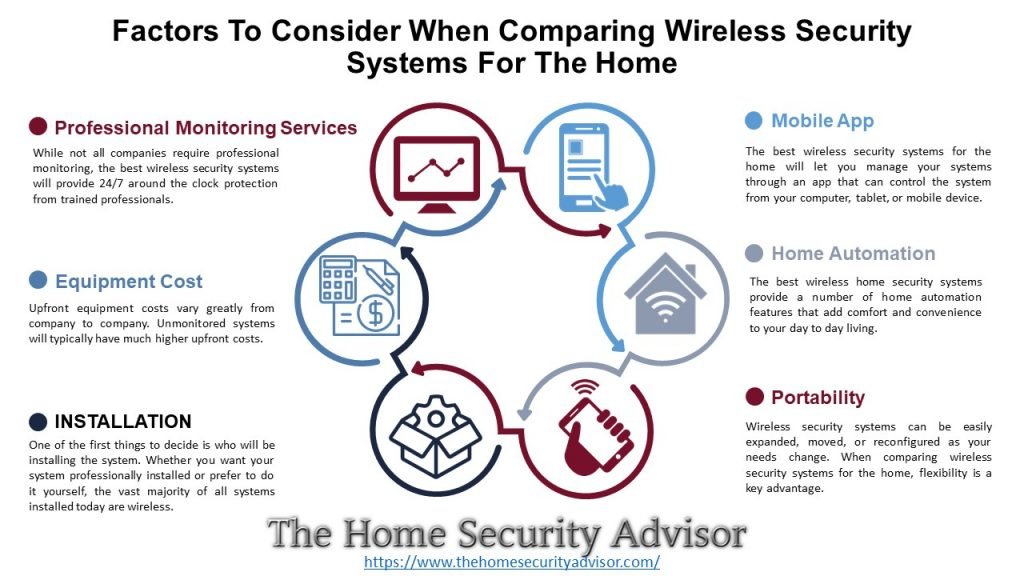
Zigbee
Zigbee is a wireless communication protocol commonly used in home automation and security systems. Zigbee-enabled devices form a mesh network, allowing them to communicate with each other and extend the range of the network. Zigbee provides robust and reliable connectivity, making it a popular choice for wireless home security system integration.
Z-Wave
Similar to Zigbee, Z-Wave is a wireless communication protocol designed for home automation and security systems. Z-Wave devices create a mesh network, enabling them to communicate with each other and extend the network’s coverage. Z-Wave offers compatibility with a wide range of devices, making it an attractive option for wireless home security system integration.
Cellular
Cellular connectivity is an alternative to wifi for wireless home security systems. With cellular connectivity, the system components use cellular data networks to communicate, rather than relying on a home internet connection. This option is particularly useful in areas with unreliable or unavailable wifi networks. Cellular connectivity ensures constant communication, even during internet outages or disruptions.
Range and Coverage
Indoor Coverage
Indoor coverage refers to the range and reach of the wireless home security system components within the confines of your home. The system should cover all the necessary areas, including entry points, hallways, rooms, and other vulnerable locations. The range of indoor coverage varies depending on the specific wireless home security system and the placement of devices.
Outdoor Coverage
Outdoor coverage is essential for monitoring the exterior of your home, including the front yard, backyard, driveway, or any other outdoor areas of concern. Outdoor cameras should have a sufficient range to capture activities happening outside your home. The coverage area may vary depending on the specific camera model, its field of view, and the camera placement.
Signal Strength
Signal strength refers to the quality and reliability of the wireless communication between the system components. A strong and stable signal is crucial for uninterrupted communication and real-time monitoring. Signal strength can be affected by factors such as distance, obstacles, interference, or the presence of other electronic devices. It’s important to consider signal strength when setting up your wireless home security system.
Wireless Protocols
Wireless security systems often utilize specific wireless protocols, such as Zigbee, Z-Wave, or wifi, to enable communication between devices. Different protocols offer different capabilities and compatibilities. It’s essential to ensure that the wireless protocols used by your home security system are compatible with other smart devices you may have or plan to integrate.
Additional Range Extenders
In some cases, the wireless signal strength of your home security system may not reach all the necessary areas. To overcome this limitation, range extenders, also known as signal repeaters or boosters, can be used to amplify the signal and extend the coverage area. Range extenders are additional devices that are strategically placed to improve signal strength and expand the reach of your wireless home security system.
Power Source
Battery-Powered
Battery-powered devices offer the advantage of flexibility and portability. They don’t require a direct power source and can be easily placed or moved around without the need for wiring. Battery-powered cameras and sensors are often wireless, allowing them to be installed in areas where wiring is impractical or impossible. Batteries need to be periodically replaced or recharged, depending on the device’s power consumption.
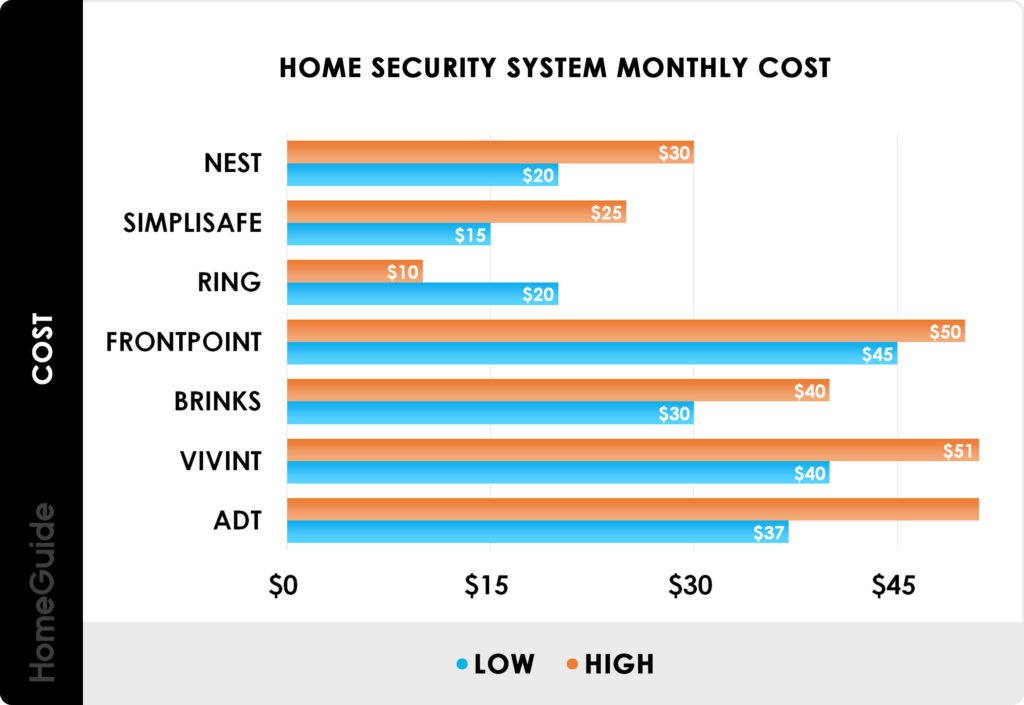
Plug-In
Plug-in devices require a direct power source, usually through an electrical outlet. These devices don’t rely on batteries, ensuring a constant power supply. Plug-in devices are typically more suitable for fixed installation, where a direct power source is readily available. They eliminate the need for battery replacements or recharging, providing continuous operation.
Hardwired
Hardwired devices are connected to the electrical wiring of your home. These devices rely on a stable power supply provided through the home’s wiring system. Hardwired devices offer a reliable and uninterrupted power source, eliminating the need for batteries or plug-in connections. They are often used for more permanent installations or integrated home security systems.
Battery Life
Battery life is a critical consideration for battery-powered devices in wireless home security systems. The longer the battery life, the less frequently you need to replace or recharge the batteries. Battery life can vary depending on factors such as the device’s power consumption, usage patterns, and environmental conditions. It’s important to choose devices with sufficient battery life to ensure continuous operation without frequent maintenance.
Cost and Pricing
Equipment Cost
The cost of wireless home security system equipment can vary depending on the brand, the number of devices included, and the level of features offered. Generally, wireless systems are more cost-effective than wired systems, as they eliminate the need for complex wiring installations. It’s important to consider your budget and the specific equipment requirements of your home when evaluating the overall cost.
Monthly Fees
In addition to the initial equipment cost, some wireless home security systems may require monthly fees for certain features or services. These fees can include professional monitoring, cloud storage, or access to premium features. Monthly fees vary depending on the brand and the specific plans or packages chosen. It’s important to understand the recurring costs associated with the system before making a purchase.
Contract Requirements
Different brands and service providers may have various contract requirements when it comes to their wireless home security systems. Some may offer month-to-month contracts, while others may require longer-term commitments. Contract requirements can affect the flexibility and cost of the system, so it’s essential to review and understand the terms before entering into any contractual agreement.
Return Policy
Having a clear understanding of the return policy of the wireless home security system is important to ensure customer satisfaction. Brands often offer return policies that allow customers to return or exchange the system within a specified period if they are not satisfied with the product or services. It’s crucial to review the return policy, including any associated fees or conditions, before making a purchase.
Warranty
Warranty coverage provides protection against defects or malfunctions in the wireless home security system components. Brands often offer warranties that cover a specific period, ensuring that any issues that arise within that timeframe will be addressed by the manufacturer. Understanding the warranty terms and conditions, including any restrictions or limitations, is important for consumer confidence and peace of mind.
Brand Reputation
When selecting a wireless home security system, it’s important to consider the reputation and track record of the brand. Here are some well-known brands in the market:
Ring
Ring is a popular brand that offers a range of home security products, including wireless security cameras, video doorbells, and alarm systems. Known for its user-friendly interfaces and reliable functionality, Ring has gained a strong reputation in the home security industry.
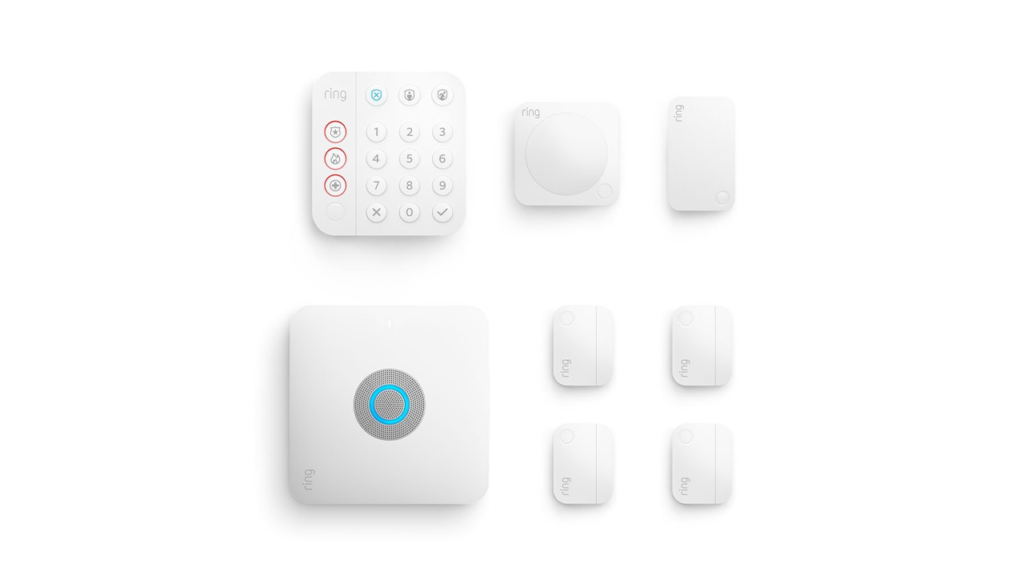
Nest
Nest, a subsidiary of Google, offers a variety of smart home devices, including wireless security cameras, video doorbells, and alarms. Nest products are known for their integration with other smart devices, providing a seamless and interconnected home security experience.
Arlo
Arlo specializes in wireless security cameras and offers a range of versatile options suitable for various home security needs. Arlo cameras are known for their high-definition video quality, advanced features, and wireless connectivity capabilities.
Wyze
Wyze offers affordable wireless home security products, including security cameras and sensors. Despite its low cost, Wyze products provide reliable functionality and features comparable to more expensive alternatives.
SimpliSafe
SimpliSafe is a well-established brand in the home security market, known for its easy-to-install wireless security systems. SimpliSafe offers a variety of components and customization options to suit different home security needs.
Eufy Security
Eufy Security offers a range of wireless home security products, including cameras, video doorbells, and alarms. Eufy Security focuses on ease of use and advanced features, offering a comprehensive home security solution.
Blink
Blink, owned by Amazon, specializes in wireless security cameras, offering affordable and easy-to-use options for home security monitoring. Blink cameras are known for their efficient battery life and simple installation process.
August Home
August Home focuses on smart locks and doorbell cameras, providing convenient and secure access to your home. August Home products offer seamless integration with other smart devices for enhanced home security and automation.
Honeywell Home
Honeywell Home offers a range of wireless home security systems, including cameras, sensors, and alarms. Known for its reliability and advanced technological features, Honeywell Home provides comprehensive security solutions.
Ring Alarm
Ring Alarm is a comprehensive home security system offered by Ring. This wireless system combines traditional security components, such as sensors and alarms, with innovative features like video doorbells and cameras.
Vivint
Vivint provides professionally-installed and monitored wireless home security systems. Known for its advanced technology and smart home integration, Vivint offers comprehensive security solutions for homeowners.
Abode
Abode offers a range of wireless home security systems, including cameras, sensors, and alarms. Abode systems provide flexible options for self-monitoring or professional monitoring, catering to various security needs.
Swann
Swann offers wireless home security systems that include cameras, sensors, and monitoring options. Swann systems are known for their durability, advanced features, and extensive coverage capabilities.
Reolink
Reolink specializes in wireless security cameras and offers a wide range of options for home surveillance. Reolink cameras provide high-resolution video quality and advanced features, making them a popular choice for homeowners.
TP-Link Kasa
TP-Link Kasa offers wireless security cameras and sensors that provide easy installation and reliable functionality. TP-Link Kasa products integrate well with other smart devices for a seamless home security experience.
Logitech Circle
Logitech Circle offers wireless security cameras that are easy to set up and provide high-quality video footage. Logitech Circle cameras come with advanced features and integration capabilities for enhanced home security monitoring.
ADT
ADT is one of the most well-known names in the home security industry, offering professionally-installed and monitored wireless security systems. ADT provides comprehensive security solutions with a long-standing reputation for reliability.
Schlage
Schlage specializes in smart locks and door hardware, providing convenient and secure access to your home. Schlage products offer wireless connectivity and seamless integration with other smart devices for enhanced security.
First Alert
First Alert offers a range of wireless home security systems, including cameras, sensors, and alarms. First Alert systems are known for their reliability, user-friendly interfaces, and comprehensive security features.
Kangaroo
Kangaroo specializes in affordable wireless home security solutions, including cameras and sensors. Kangaroo products offer easy installation and simple mobile app control, making home security accessible to a wide range of users.
By considering the reputation and customer reviews of these brands, you can make an informed decision when selecting a wireless home security system that best suits your needs.
